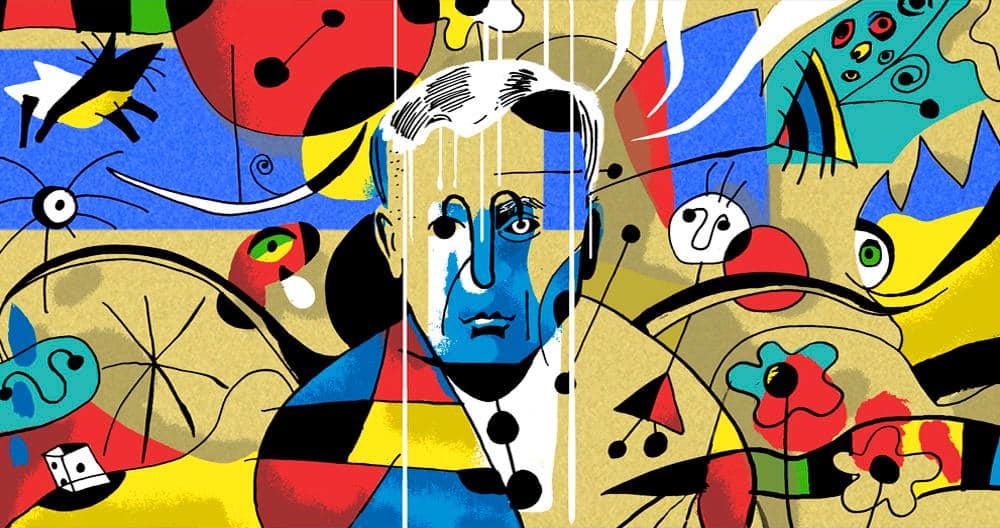Blockchain, Crypto Art and new purchasing models. The future of the art market is today.

Rome Business School – Research CenterE-commerce and Industry 4.0. Between Brexit, COVID and Artificial Intelligence.
If on one hand the network and technology represent a limit of trust and entry for users of the online art market, on the other hand it is the network itself, which offers concrete solutions to break down its limits.
The solution – among others – is called “Blockchain,” a sophisticated elementary system (yet), according to which, to a given lot, a cryptographed identification code (Hash) is associated – which includes information relating to the dimensions, history of buyers, dates and sales figures.
Once generated, the code is sent to different heads (Blocks), which, a bit like ‘digital chancelleries’, record it and place it in a database. When the system is asked – therefore when a customer, user, or artist himself – needs to access information on the piece, the entire series of blocks aligns to confirm, or block, the authentication of the lot. Through this system, problems relating to authenticity, history of buyers (provenance), date and place of sale, as well as physical conditions, alterations and price changes are reduced, ensuring more transparency, traceability, security and trust. The blockchain shows strong and reassuring support throughout the art market community, both nationally and internationally.
The element of ‘trust’ in this technology is so authentic, that with the certification of physical pieces – purchased locally or online – has inspired the definition of an ‘artistic movement,’ which made risk, its uniqueness, and authenticity: Crypto Art. Presumably definable as the daughter of “Digital Art,” (digital art) – which boasts a complex and multidisciplinary history born over the 60’s – the Crypto Art, as the name suggests, is the combined result of art, digital and crypto-currencies, a perfect algorithm of the historical present and the future of the arts market.
The Crypto Art is defined as such – an art – since the intentions, processes and authors are configured and identified as such; it is also defined as digital, since the entire dimension in which it was conceptualized, created and in which it ‘exists’ is entirely digital; finally, it is crypto, since the proposition on the market and the purchase are managed only through cryptocurrencies. The blockchain now intervenes in this triangle of convergence. Once made – or at the time of purchase, in fact, the Crypto Art work is associated with a “Non-Fungible Token,” NFT, (Non-replaceable Token), a sort of certificate of ownership, which not only binds the digital work to a physical buyer, but allows the same, over time, to sell, capitalize or act with its lot, like any asset.
This digitally owned game quickly persuaded so many users that in just one year – February 2020-21 – the digital art market went from $ 235,000 to $ 63 million. In addition to the figure, we need to focus on the agent: the auction. And in fact, just this year, between February and March 2021, the auction house Christie’s will put on the podium the work every day by the artist Beeple, a series of 5000 images categorized as a single work, whose starting price is 100 dollars. Considering the price made at the last auction by the same artist, 3.5 million dollars, the speculations on the final price (premium price) suggest a new narrative on the online art market.
The example of Crypto Art reveals how, provided the necessary guarantees (blockchain), the art market can grow, experiment, persuade portfolios and propose new offers and products, as well as aesthetic and cultural phenomena. And from Crypto Art also derives another purchasing scheme that seems to be inspiring other markets and businesses. In addition to the direct owner-lot purchase that generates an NFT, in fact, there is a variant (LRC1155) that allows the ownership of the work to be parceled out – in this solution the lot is offered in several versions, as if it were available in series: in number and limited edition.
The ownership, therefore, always remains the owner-lot, but the same lot, in a number ascribed and registered through the blockchain, is reproduced and owned by several owners. This phenomenon of plural and widespread ownership in art – and not only – is growing. Another variant similar to NFTs is “splitting,” a practice that involves the purchase of a piece owned by a lot – such as if a Picasso painting were divided into parts and they were simultaneously owned by several owners; each of these, like any property, has the right to manage its part in (almost) autonomy.




